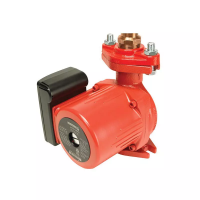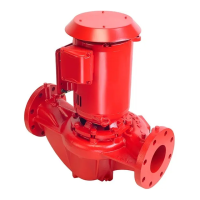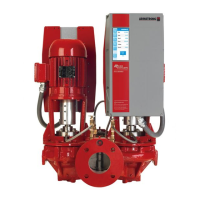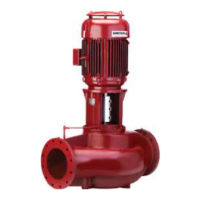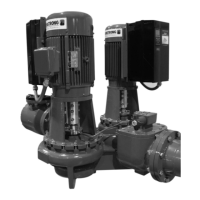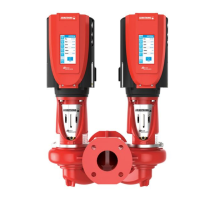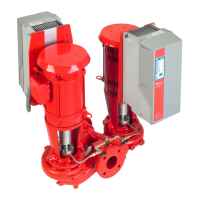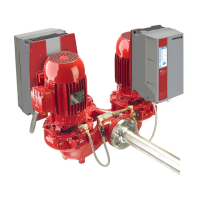Do you have a question about the Armstrong 4360 and is the answer not in the manual?
Essential safety guidelines for installation, handling, and operation. Study document before use.
Operating temperature limits and precautions for personnel safety regarding hot surfaces.
Presents typical sound pressure levels for various pump models and operating speeds.
Details vibration levels meeting Hydraulic Institute Standard HI Pump vibration 9.6.4.
Guidelines for proper preparation and storage to prevent rust and maintain functionality.
Instructions for inspecting equipment upon arrival and careful handling during uncrating.
Safe lifting and positioning procedures for larger Vertical In-Line pump units.
Proper placement for pump operation, maintenance, service and inspection. Ensure adequate space around unit.
Details various installation arrangements, pipe mounting, and structural support considerations for VIL pumps.
Best practices for piping connections, including alignment, bends, and strain prevention.
Procedures for verifying pump and motor alignment, especially for Series 4300 units.
Step-by-step guide for priming, initial rotation check, and safe start-up procedures.
Routine maintenance and inspection recommendations for ensuring long-term pump performance.
Information on pump lubrication requirements and motor lubrication based on manufacturer.
Importance of thoroughly cleaning and flushing the system before pump operation.
Illustrations and explanations of various piping support and mounting configurations.
Essential safety guidelines for installation, handling, and operation. Study document before use.
Operating temperature limits and precautions for personnel safety regarding hot surfaces.
Presents typical sound pressure levels for various pump models and operating speeds.
Details vibration levels meeting Hydraulic Institute Standard HI Pump vibration 9.6.4.
Guidelines for proper preparation and storage to prevent rust and maintain functionality.
Instructions for inspecting equipment upon arrival and careful handling during uncrating.
Safe lifting and positioning procedures for larger Vertical In-Line pump units.
Proper placement for pump operation, maintenance, service and inspection. Ensure adequate space around unit.
Details various installation arrangements, pipe mounting, and structural support considerations for VIL pumps.
Best practices for piping connections, including alignment, bends, and strain prevention.
Procedures for verifying pump and motor alignment, especially for Series 4300 units.
Step-by-step guide for priming, initial rotation check, and safe start-up procedures.
Routine maintenance and inspection recommendations for ensuring long-term pump performance.
Information on pump lubrication requirements and motor lubrication based on manufacturer.
Importance of thoroughly cleaning and flushing the system before pump operation.
Illustrations and explanations of various piping support and mounting configurations.
| Brand | Armstrong |
|---|---|
| Model | 4360 |
| Category | Water Pump |
| Language | English |
